The First Muscle Truck
The street 426 Wedge did better in trucks.
Story & photos by Cliff Gromer

Most likely, it began with the “Flying Barn Door,” a 1963 Dodge D100 drag truck that was screwed together by Jim Nelson and Dode Martin of Dragmasters. The Drag Master truck, as it was also known, received some factory help, in the form of a couple of Max Wedge engines and fiberglass front end body pieces. The Drag Master ran in B/FX, and was piloted by Dick Boynton, a local radio personality on KDEO in the San Diego area, and who also doubled as the team’s PR man. The truck was sponsored by the five local Dodge dealers in the area.
’Course, the Dodge Truck engineers, being engineers, probably put something similar together for their own enjoyment having access to Max Wedge and Street Wedge engines. The 426 Wedge swap proved particularly sweet, but more important, was do-able as a production package, although not on the regular assembly line. Hey, who could argue with a pickup packing 365 ponies and 470 ft./lbs. of torque? The mill became the centerpiece of the High Performance Package (HPP) that included a 3-speed LoadFlite pushbut- ton automatic trans, heavy duty springs and rear axle torque rods from a ’61 Imperial, which served as over-the-axle traction bars. Power steering was mandatory as was dual exhaust. The icing on the cake was the “heavy duty” instruments which meant that you got a 6-grand in-dash Sun tach (a 5-grand tach could be had as an option on any truck-even slant-6 powered). The whole deal was wrapped in a D100 or D200 2- wheel-drive long bed pickup.

The stock passenger car 426 Street Wedge was called an “industrial engine,” in the case of the HPP option. It was simply an administrative thing that was needed to source the mill for this application. The engine was not a total bolt-in, and required special mounts, some parts, and modifications. The package was installed offline in the “9190 repair department.” The engine mounts were sourced from Imperials and custom fabrication was needed to attach them to the frame. The rear torque rod frame and axle mounts also were custom- fabbed. The carb throttle and downshift
linkage is unique to the truck, as it differs from passcars. The dual exhaust muffler and tailpipe hangers are mirror images of each side, but the actual pipes are unique to the package. The trucks use cast iron mani- folds—a center dump for the driver side and a rear dump for the passenger side. They are not the same as B-body pieces.
Now, you’d figure that Dodge would have been able to sell a ton of these haulers, but they didn’t. First off, management limited Dodge to producing no more than 50 HPP trucks between 1964-’65 (although one ’63, probably a prototype, and three ‘66s have since surfaced). Second, was the price. A new 1963 D100 listed for $2009. The HPP option added a whopping $1235.60. The CSS/High Performance Package Registry to date lists a total of 15 HPP trucks, with eight being 1964 vintage. One of these three ‘64s was purchased new by J.Y. Chadick, of Weatherford, Texas. Chadick, who is up in years these days, used to work in the construction industry. He bought his HPP truck at Becker Dodge, in New Braunfels, Texas (the only place in the world with a riverbed totally lined with beer cans and bottles). Here’s his recollection in his own words (you’ll have to come up with your own Texas twang).
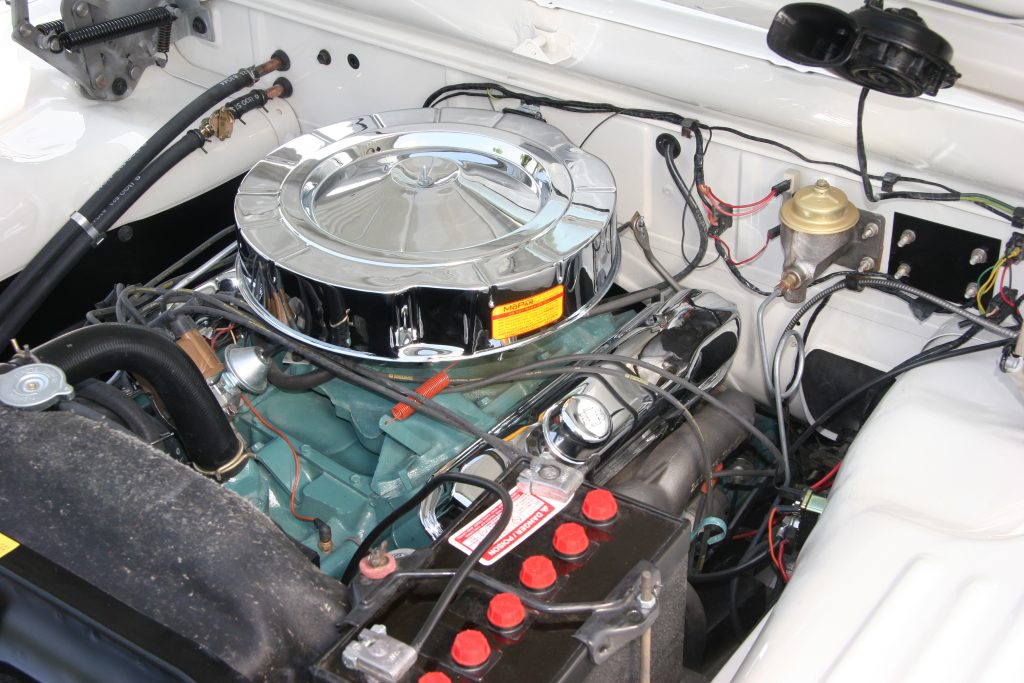
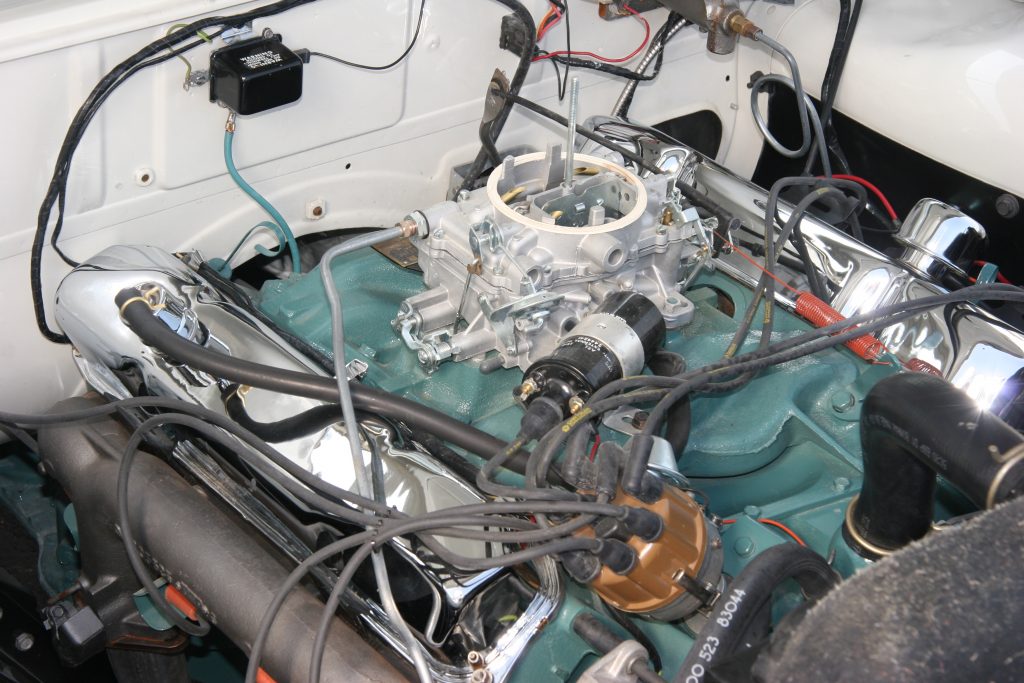
“I said I wanted a good high-powered rig. The dealer said he had a 383. Asked if he had anything bigger. I read they had made some with 413s. I said, ‘I want one of them big ones.’ So the dealer put me in touch with a guy at the factory.“ The factory guy said ‘this is no truck engine you’re gettin.’ I said I didn’t want a truck engine, ‘I want something good.’ The factory guy said it would be the fastest truck around. He said it has a plate stating it had an industrial engine ‘but don’t let that fool you. It’s a hot rod truck and it’ll flat run!’ And so here it come-power steering. I didn’t want it, but it came with the package. I didn’t race it much, but would kinda play with people. Never got wild enough to get tickets.”
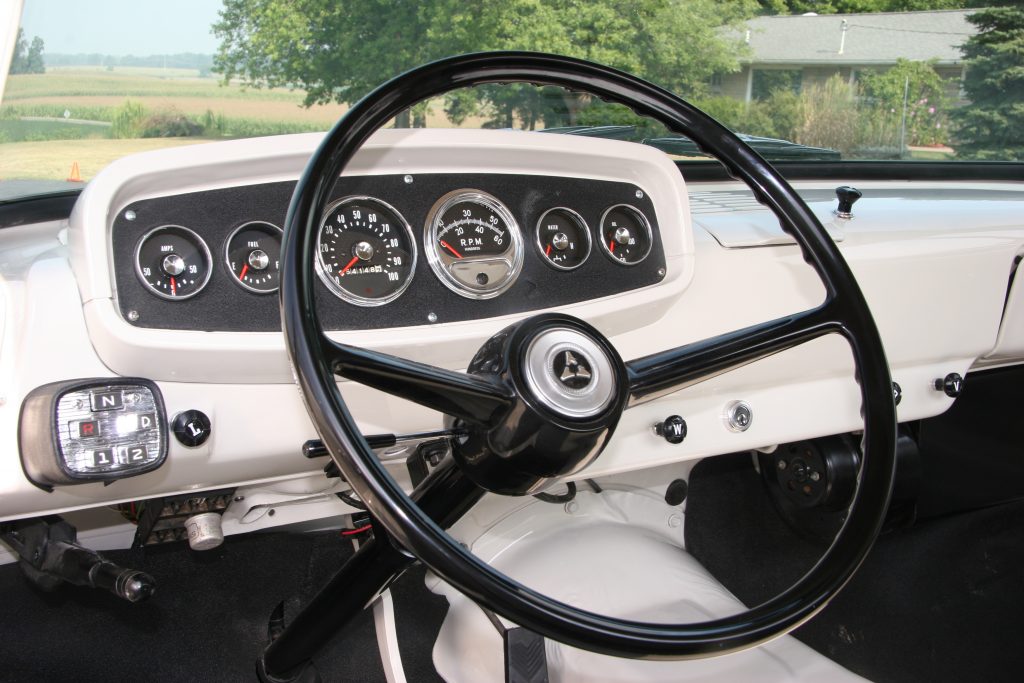
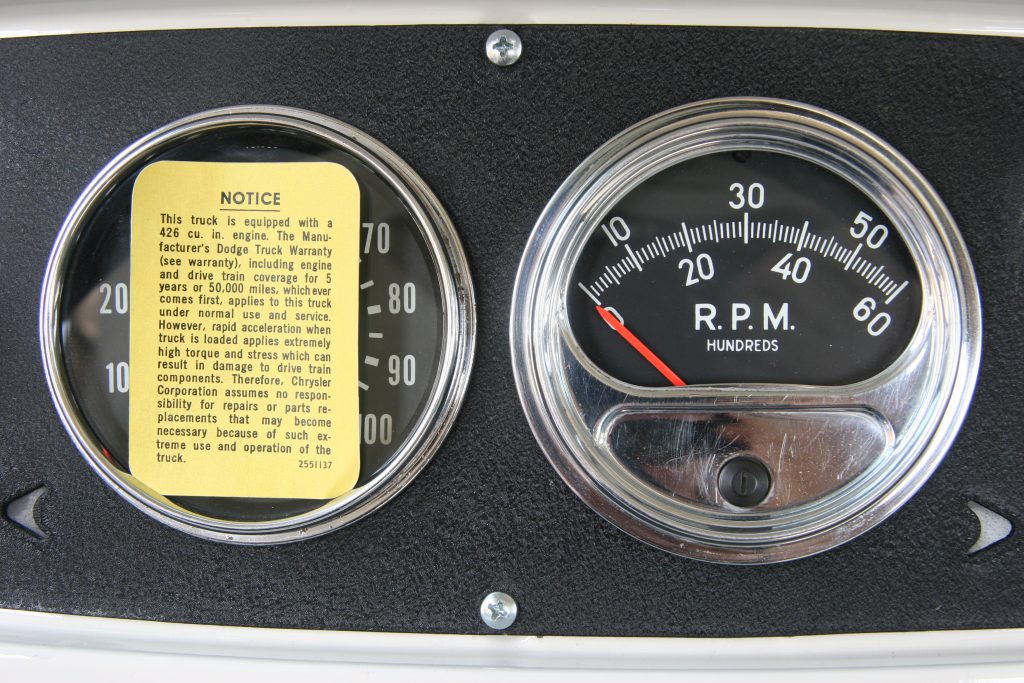
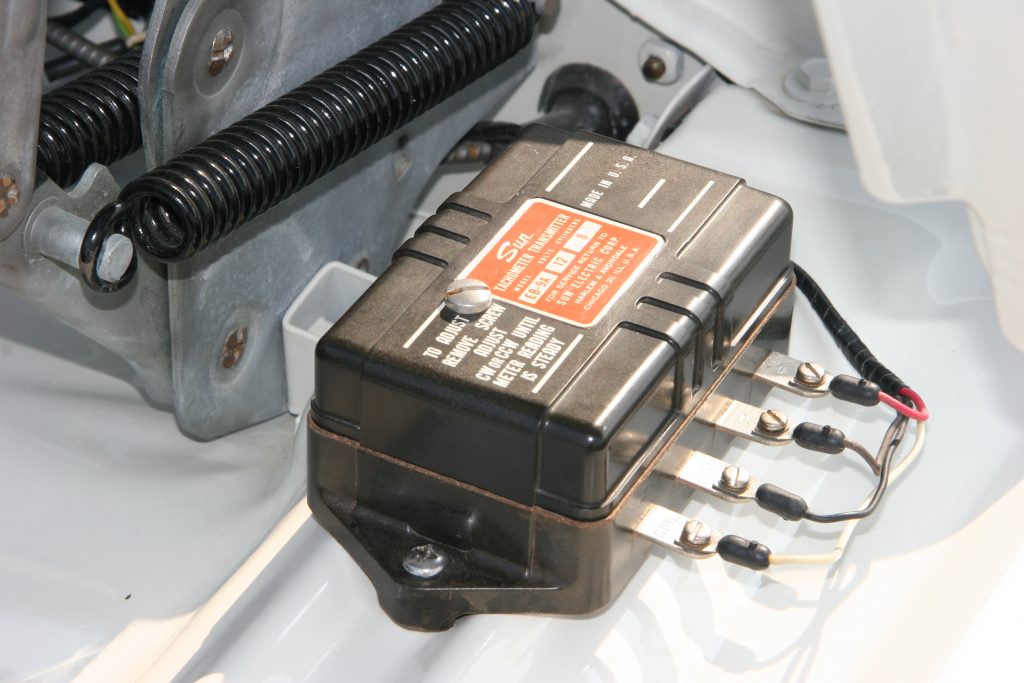

Chadick supposedly had a unique way of pulling into the job site. He’d come down the road at 60 mph and punch Reverse. The stock 7.10-15 B.F. Goodrich Silvertowns were too skinny to hurt the drivetrain, and would just spin backwards. And, that’s how he came to a stop. When we asked Chadick why? He replied “sometimes I just liked to do that, it was all guaranteed and all that. I’d put that thing in Reverse, and there we’d go, and the tires would spin.” E’berg supposes his LoadFlite’s reverse blocker valve was defective…?
Chadick had another interesting recollec- tion. He said that the bed was slick, and he had the truck three or four years before he’d let the kids go in the bed with their shoes on.
“I’d set them against the cab, had three of ‘em at the time. I’d get out there where there wasn’t anybody, and accelerate real good and watch ‘em slide back to the tailgate in the mirror. I tell ’em to stay still and sit up straight, and if I’d go fast enough, (the wind) would blow ’em back up against the cab. They thought it was kinda funny, I thought so. Well, I sure coulda killed a lot of us. Hah!”
Well, ol’ J.Y. did eventually blow the rear at 30,000 miles, and the dealer did replace it under warranty (although they installed an open rear instead of the Sure-Grip that the truck came with). We guess the Wedge motor had had enough of J.Y.’s antics, too, and, in 1983, it broke a piston at 63K. Chadick parked the truck by the side of his house, intending to fix the motor someday. He never did.
Ron Slobe (now deceased), of R&R Salvage, was buying up a bushel of Mopars at the time, and he had buyers out all over the place scouting primarily Hemi and Six- Pack cars. One of them saw J.Y.’s parked truck and bought it. It sat, in the condition it was bought, in Slobe’s collection in Verona, MO for over 10 years.
In 1993, Dr. Terry Winkler, accompanied a friend who was buying a Hemicar from the Slobe collection. The warehouse was impressive with maybe 40 Hemis and an equal number of Six-Packs. All the way down at the end of the row of cars, Winkler noticed a white truck. Was Slobe interested in selling it? One of the Slobe boys said that the truck was Ron’s favorite out of all his vehicles, and that he would never sell it.
And, he never did, he died first.
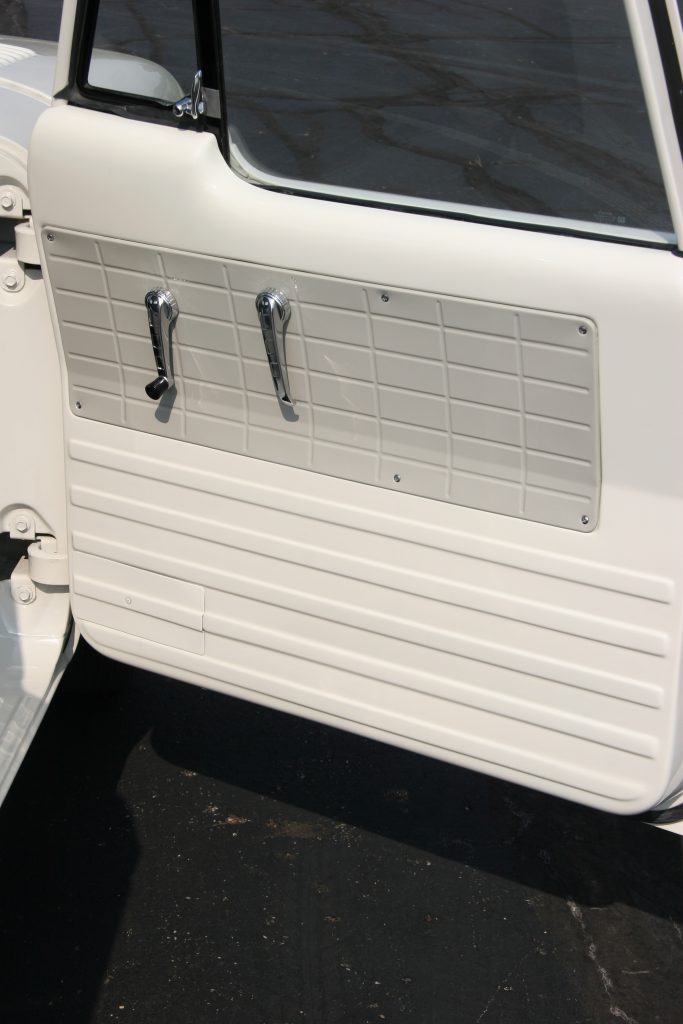
The truck then went to a friend of Slobe’s-Dan Wilson, who bought and sold Mopars. Wilson, in 2000, sold the D100 to Winkler. The truck, at this point was in bad shape-even worse than when it left Chadick’s. The floor was rusted through with holes, the doors were rusted out, the top of the motor was off, and the cylinders and crank were rusted.
Undaunted, Winkler, with the help of Clay Phillips of Performance paint and Chassis, embarked on a 9-month restoration. The original crank polished up fine, and Isky made a duplicate cam, following the contours of the rusted original. The 426 now purrs with a nice lopey idle. Winkler admittedly still has some underhood detailing to do in order to score top points in show judging. He soon will be replacing the distributor cap with the correct black one, and attend to several other items.
Interestingly, Winkler is the second registered owner of this rare muscle truck, which hadn’t run since J.Y. parked it beside his house in ’83. Hey doc, how about one of them cool J.Y. Chadick reverse spin stops? Then, you could put Ehrenberg in the bed, up against the cab, without his shoes, and…(but, please—keep the tailgate down!)
Sheets ‘N’ Plates








Simons, who runs the High Performance Package Registry, owns an HPP D100 that his father bought new. Here are detail shots of the original build sheet that shows the handwritten words “Hot Rod” in two places, the Industrial Engine Plate, Data Plate and SERT Sheet. The SERT Sheet is a series of sheets that help in the assembly of non-standard options. While similar to a Build Sheet, the SERT Sheet is different in that it lists every nut, bolt, washer bracket, hose, etc., that is required in addition to the special accessory part itself.
Special thanks to Ben Simons, who runs the High Performance Package Registry. Check out his websites: www.cssregistry.com and www.customsportsspecial.com for info on Dodge’s Custom Sport Special and High Performance Package.


That was awesome